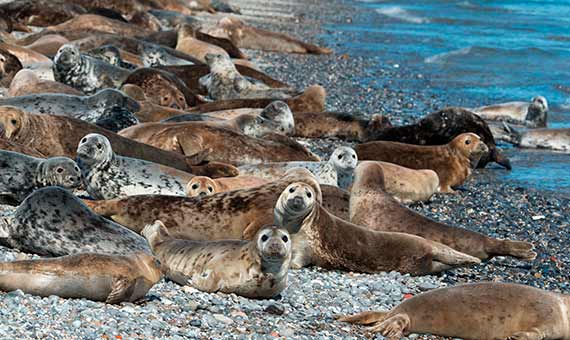The search process
A ubiquitous property in the behavior of living beings is their need to conduct search processes to guarantee and increase their chances of survival and/or reproduction. At the behavioral level, we can call “search” any process through which an individual or group explores a physical or virtual space to find a specific objective whose location has only partial or no information or is not able to completely process.
This uncertainty or lack of information causes search processes to represent a major challenge for living beings, so that the success of any search lies in their ability to actively develop strategies that allow them to explore their environment, and thus reduce or progressively compensate for uncertainty. For example, animals need to efficiently explore territories in search of food, shelter or companions, just as humans are able to develop strategies for searching in more abstract contexts (resolving mental problems, recognizing patterns, searches in virtual spaces or databases, etc.) involving an exploration at the inner or cerebral level.

We can call “search theory” the disciplinary field that studies in a theoretical way the efficiency that each search strategy has in a specific context, as well as the actual search strategies that biological species implement in their natural environment, and presumably respond to certain optimization criteria that would have evolved to efficiently solve their particular basic needs.
Search theory: a multidisciplinary challenge, such as physics
One of the current attractions of “search theory” is that it poses an exciting multidisciplinary research challenge. It is necessary to take into account that the study of the search processes, of whatever type, passes through analyzing trajectories and movements (of exploration). The field of science that historically has been in charge of developing theories and tools capable of describing patterns and trajectories of movement is physics, from the laws describing the harmonic and ordered movement of solid objects (like the elliptical orbit of planets around the Sun), to the theories of the Brownian motion that explain seemingly random or chaotic movement on a molecular scale. So, physics offers a theoretical and methodological background of enormous interest for biologists, sociologists or psychologists interested in studying movement patterns.
A branch of ecology that is quite recent but is undergoing a strong development, in part thanks to the fact that it has successfully exploited this baggage, is movement ecology. The great challenge of this is to manage to discern the forces and behavioral motivations of living organisms exclusively from studying their movement trajectories. For this purpose, new technologies (telemetry or GPS in the case of large organisms, or microscope tracing techniques are used for small scales) to monitor and understand the movement of individuals with a space/time reach and resolution that was unthinkable until recently. It is, therefore, a cross-cutting area to search theory, with which it has numerous relationships, and in which it is increasingly common to find research projects where physicists and ecologists combine efforts and capacities to provide models or theories that explain, for example, the way in which many species change their foraging patterns depending on the environmental conditions.
The journey of the Kahn and Kentaro lynx located with GPS necklaces/ Project Life+Iberlince
Researchers in this field, however, are aware that this physical/ecology association has a ‘third leg’ that has still not been developed much but is essential to reach our objectives: cognition. The fact that traditional physics was developed to understand the movement of particles or objects subjected only to external forces or conditions (such as gravitational fields, magnetic fields, etc.) represents an obvious limitation. By contrast, the study of living things implies, even from a reductionist view, the consideration of internal constraints (the level of satiety, for example, in food trajectories) that act in conjunction with the sensing organs to direct the individual’s final behavior.
Converge to understand
Faced with this situation, the future objective should therefore be to progressively identify the existence of those basic elements that the physical and ecological models need to incorporate to understand the real motivations orchestrating these processes. As an example, we are currently working on the development of theoretical models of ‘smart minimal particles’ to understand what minimum elements are indispensable so that a cognitive process can give rise to intelligent movement patterns (in the sense that they can show optimal or proper strategies of complex organisms). This issue is of evident importance from the point of view of the evolution of cognitive systems.
To the extent that these methodologies are combined, they are developed together and incorporated into the traditional lines of work in the behavioral sciences, we are confident that they will contribute to a qualitative advance in the understanding of how organisms seek and find solutions for their survival.
Daniel Campos Moreno
Universidad Autónoma de Barcelona
Comments on this publication